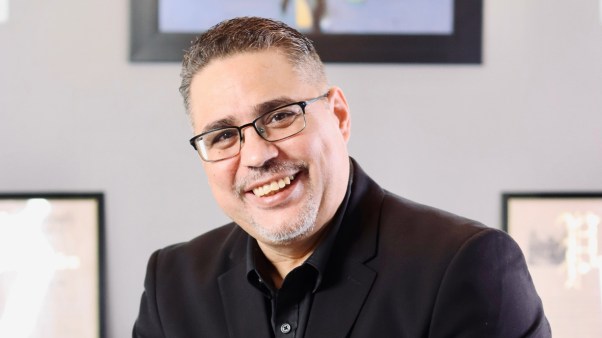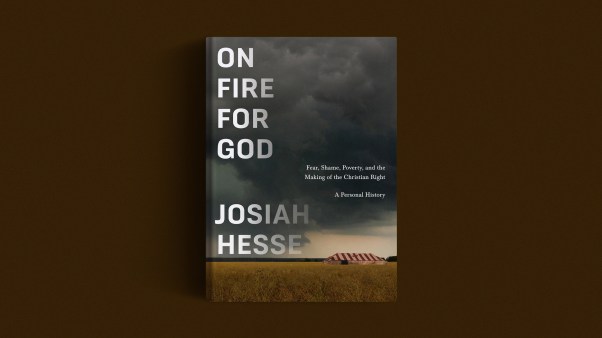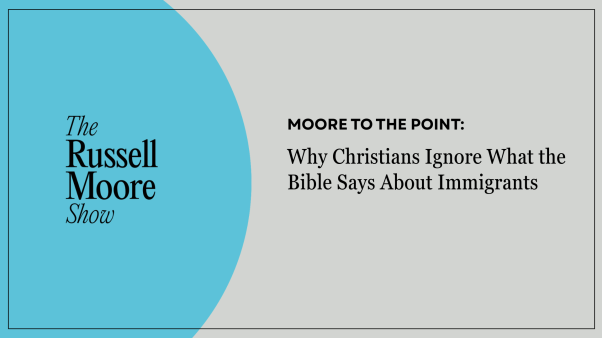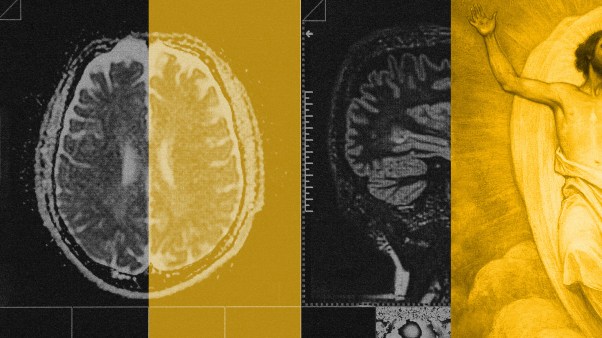Lights.”
I wasn’t sure I heard correctly. I asked the student to repeat his answer.
“Lights.”
Again I was reduced to silence. Clearly I was missing something.
“Do you mean electricity? Like, instead of candles?” I asked uncertainly.
“No,” he replied. “I mean lights—you know, lights.”
And then it dawned on me. The student meant lighting—dimmers, spotlights, colored lights, the whole array of controls for “stage lighting”—what you might find at a stand-up show, theatrical production, or concert.
I had proposed a question to a room of 40 college freshmen: Suppose you traveled to a new city next weekend, and on Sunday morning you chose to visit a church. What would you expect to find?
I often ask this question to begin a discussion about liturgy, the “script” that different traditions follow in their public worship, however “high” or “low” the church in question may be. Students typically think of greeters, ushers, pews, people, preaching, tithing, prayer, Scripture. Sometimes Communion gets a mention. Creed and confession of sins rarely do.
Increasingly, though, students talk about technology: screens, videos, cameras, livestreaming. Other elements are equally technological, though they don’t think of them that way: mics, headsets, multi-piece bands, a complex production with many moving parts. All signs of technological development and adaptation; all relatively new to Christian liturgy; none more than a few generations old, at least in terms of common church usage.
All this came home to me in my student’s honest first thought in response to my question: Lights. When he imagined going to church, when he mentally walked into a Christian house of worship, what came to mind before anything else was a controlled lighting system. Dim lights for quiet meditation, bright lights for benediction, a spotlight for the sermon, varying colors for different band members and their respective solo moments.
From liturgy of Word and sacrament to a theatrical light show. How did we get here?
The first thing to notice about my student’s answer is that it mostly reflects experience in large churches. My students are, in general, Bible Belt evangelicals. Even when they hail from rural or small-town backgrounds, though, their upbringing feels to them like an exception to the rule, and the rule is a well-heeled megachurch with a quality worship “production.” That’s how their feet vote when they move to a bigger town, like Abilene, and the same applies when they move to a major urban area, like Houston or Austin or Dallas–Fort Worth.
But according to recent studies, a super-majority of American churches today have 100 or fewer members. When we think of a typical congregation, then, we should think of one consisting of two or three dozen families. Few congregations of that size have the resources for—or the expectation of—professional lighting. They’re more worried about keeping the lights on at all.
Moreover, while church attendance and membership are both in decline, and while the average church size is barely in the triple digits, a growing share of the overall church-attending population finds itself in large congregations. In other words, as the percentage of Americans who attend church shrinks, those who do attend increasingly frequent bigger churches. This phenomenon distorts what feels like “the average church” and, therefore, what “typical worship” is like.
To afford, maintain, and operate professional lighting of the sort my student had in mind, a church would have to be far above the 90th percentile of American congregational size, which is 250 regular attendees. Yet for my student, as for so many others, this size and its hallmarks are paradigmatic rather than exceptional. They’re just “what church is today,” what one would reasonably expect visiting a random church in a strange city.
This trend is both cause and consequence of churches investing in technologies that make Sunday morning a high-production offering, whether for in-person crowds or for folks who stream from home. Long before COVID-19 but exacerbated by lockdown, many churches have been competing in a kind of techno-liturgical arms race to draw seekers, especially young families and professionals, to the “Sunday morning experience” of high-tech public worship.
For many seasoned evangelicals among the millennial and Zoomer generations, the result—state-of-the-art, high-definition, professional video and audio and music, with smooth transitions and fancy lighting, all frictionless and ready-made for the internet—is simply becoming the norm. It’s what church, or worship, means.
At best, the gospel retains the power to cut through all the noise. At worst, believers receive neither the Lord’s Word nor his body and blood. Instead, they get a cut-rate TED Talk, spiritual but not religious, sandwiched between long sessions of a soft rock concert.
There is no question that ministers at churches like these have been motivated by good intentions. If more people want to hear the gospel and give praise to God, should we not make it possible for them to do so? Should we not build it, praying they will come?
Few would suggest that the mere size of a building is evidence of unfaithfulness, nor would I propose that microphones be abolished in favor of preachers gifted with naturally loud voices. That’s a caricature of so-called Luddite concerns with new technology. Theological questions about technology are more serious than that. For one, they are rarely answerable in advance. They’re discerned on the ground. But they do require discernment. The mere fact that a new technology appears at first to aid in the church’s mission is not sufficient.
We might instead interrogate the nature of Christian worship itself. I asked my students what they would expect, visiting a church for the first time. What should they expect?
The historic answer of the church down through the centuries is that they should expect the liturgy of Word and sacrament. They should know in advance that, with real but limited variations, they will pray, sing, confess their faith, confess their sins, hear the word of the Lord in Scripture, hear the gospel of the Lord in proclamation, and receive the visible word of the Lord’s body and blood, the bread of heaven broken for their salvation. Whatever country they are in, whatever language is spoken, whether visiting a city or a town, a congregation of 5,000 or a parish of 50—this is what should await them.
Notice what is necessary for the celebration of this liturgy: sisters and brothers gathered in the name of Jesus, a leader, the Bible, a little bread and wine. Believers, Scriptures, elements, and a place to bring them together. That’s it. In fact, on a given Sunday morning around the world, you can find them brought together in cathedrals, in houses, in apartments, in strip malls, in cafeterias, in mud huts, out in the open by rivers and under trees, hidden in basements and attics for fear of being found out.
This is the genius of Christian liturgy. Beyond the tools required to produce texts (which long predate the printing press) and food and drink (which are necessary to live), no technology is necessary for the church to worship the Lord in Spirit and in truth. Perhaps, as the case may be, new technologies have the potential to help. But they always have the potential to harm, to distort and misshape.
On one hand, worship is a form of catechesis. It molds our hearts, minds, and imaginations. Young people are right to expect, on a given Sunday, what they have seen and heard on hundreds of previous Sundays. It’s clear to me that the present catechesis has worked, but in all the wrong ways.
Too many evangelicals assume that ordinary worship is what I’ve elsewhere called the tech-church show—a performance in every sense of the word. Not the drama of the Eucharist or the reenactment of the liturgical script but a slick, high-def production. If I am right that this is what many assume is normal, based on its prevalence among larger churches, then my suggestion is that ministers need to go back to the drawing board. Back, I should say, to the time-tested wisdom of Word and sacrament. Call it the ABCs of Christian liturgy.
Recall, on the other hand, who is able to “compete” in this worshiping arms race: large churches in major cities. Who can’t? All the rest of them. That is, at least four-fifths of congregations cannot play the high-tech game.
Given that tens of millions of Americans have left church over the last few decades, this is liturgical malpractice. It’s short-sighted too, given the church’s mission. But above all, it’s a failure of fraternal love.
We don’t want small churches to close their doors. We want churches of every size, in every type of locale, to flourish—just as they are, just where they are. But if the norm is the high-tech production I’ve outlined above, then these churches, even when they are in cities, will continue to die, since they inevitably lack the resources to keep up with the ecclesial Joneses.
Much can be said for a joyful service that communicates both uninhibited and Spirit-filled adoration. But faithful worship is, and therefore should be, something any church can do, regardless of production level.
We must imagine an alternative catechesis—one that, for students like mine, brings to mind first of all the risen Christ: his living Word, his body and blood, his gathered people. The question is: What kind of worship would produce such a thought?
Brad East is an associate professor of theology at Abilene Christian University.











